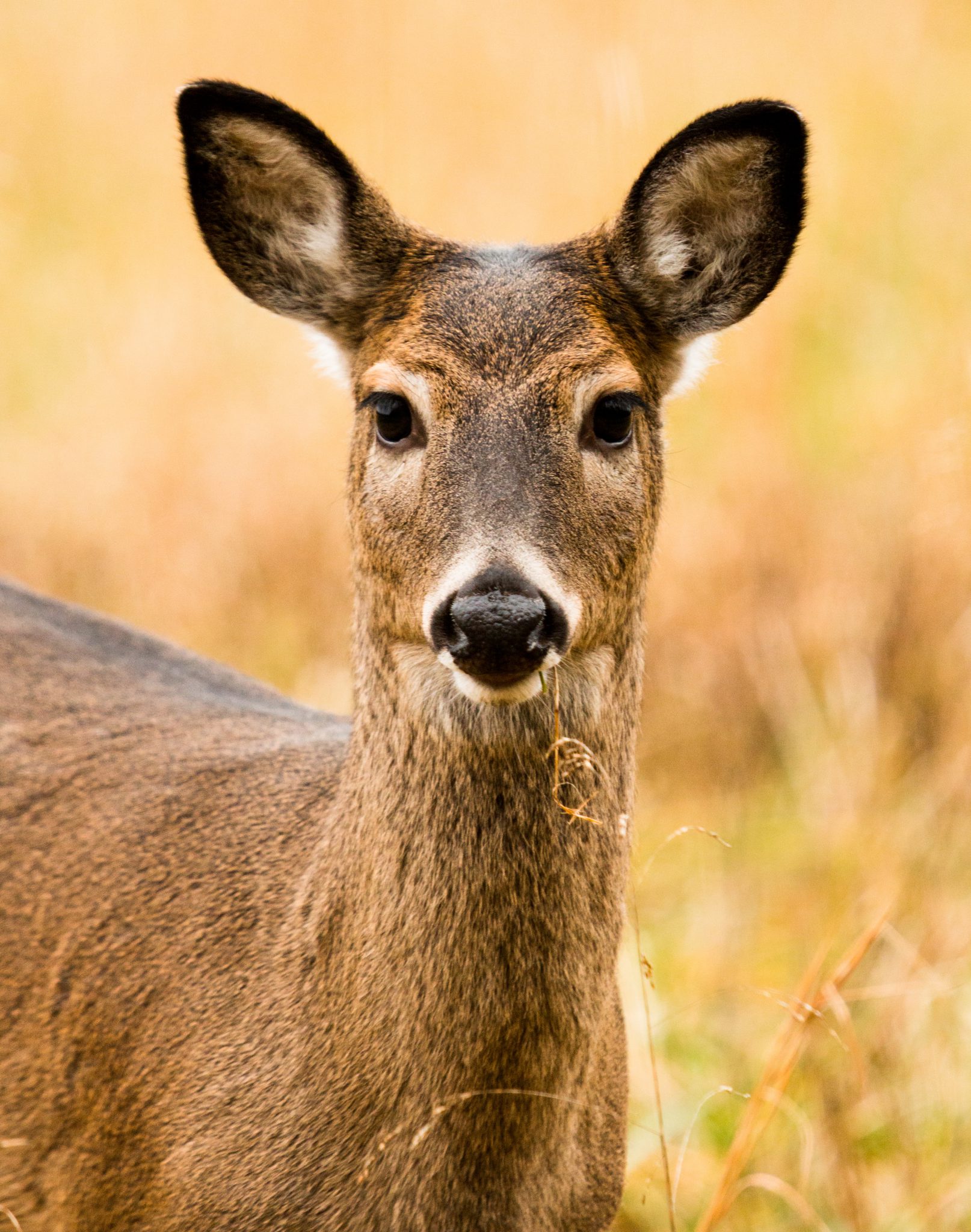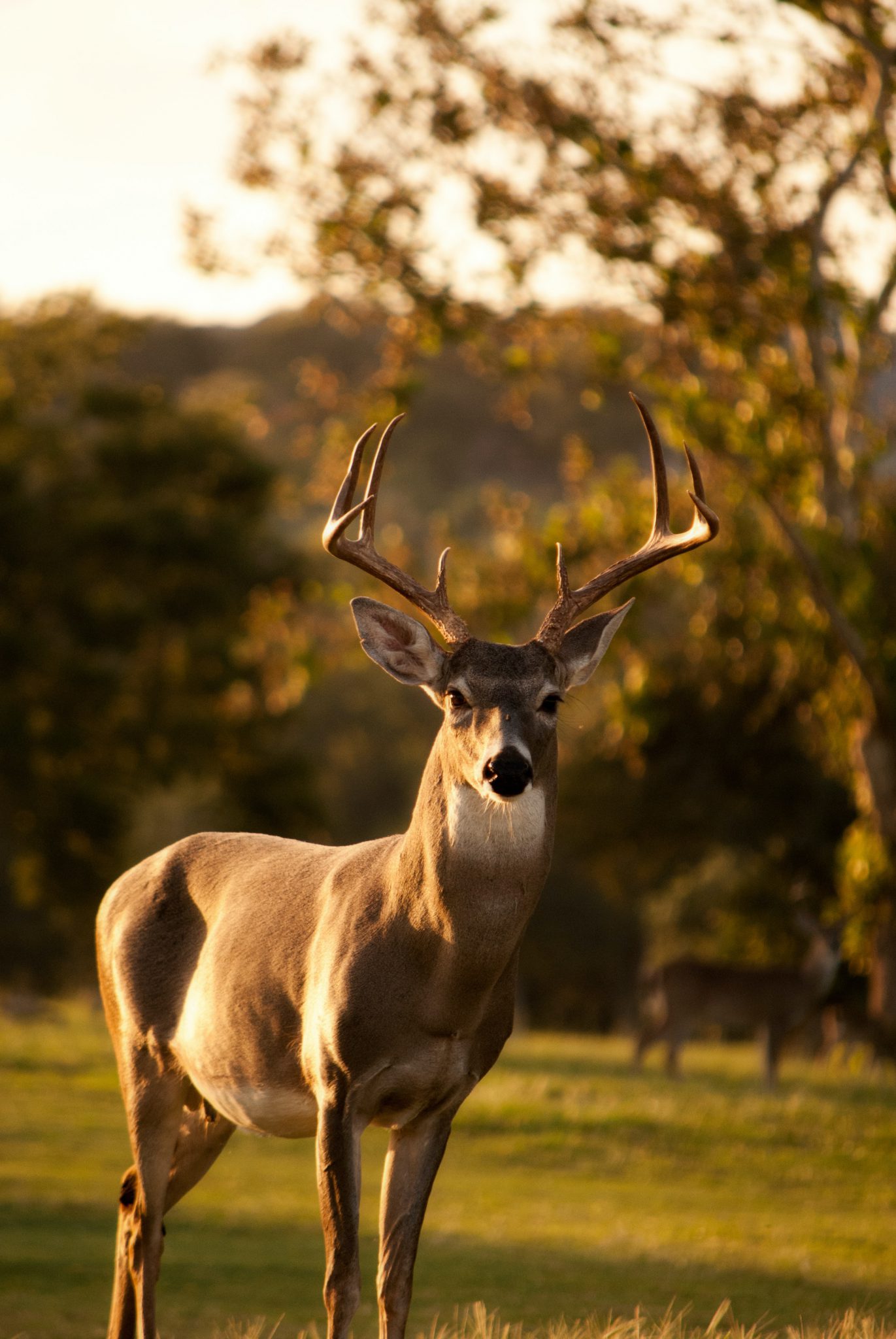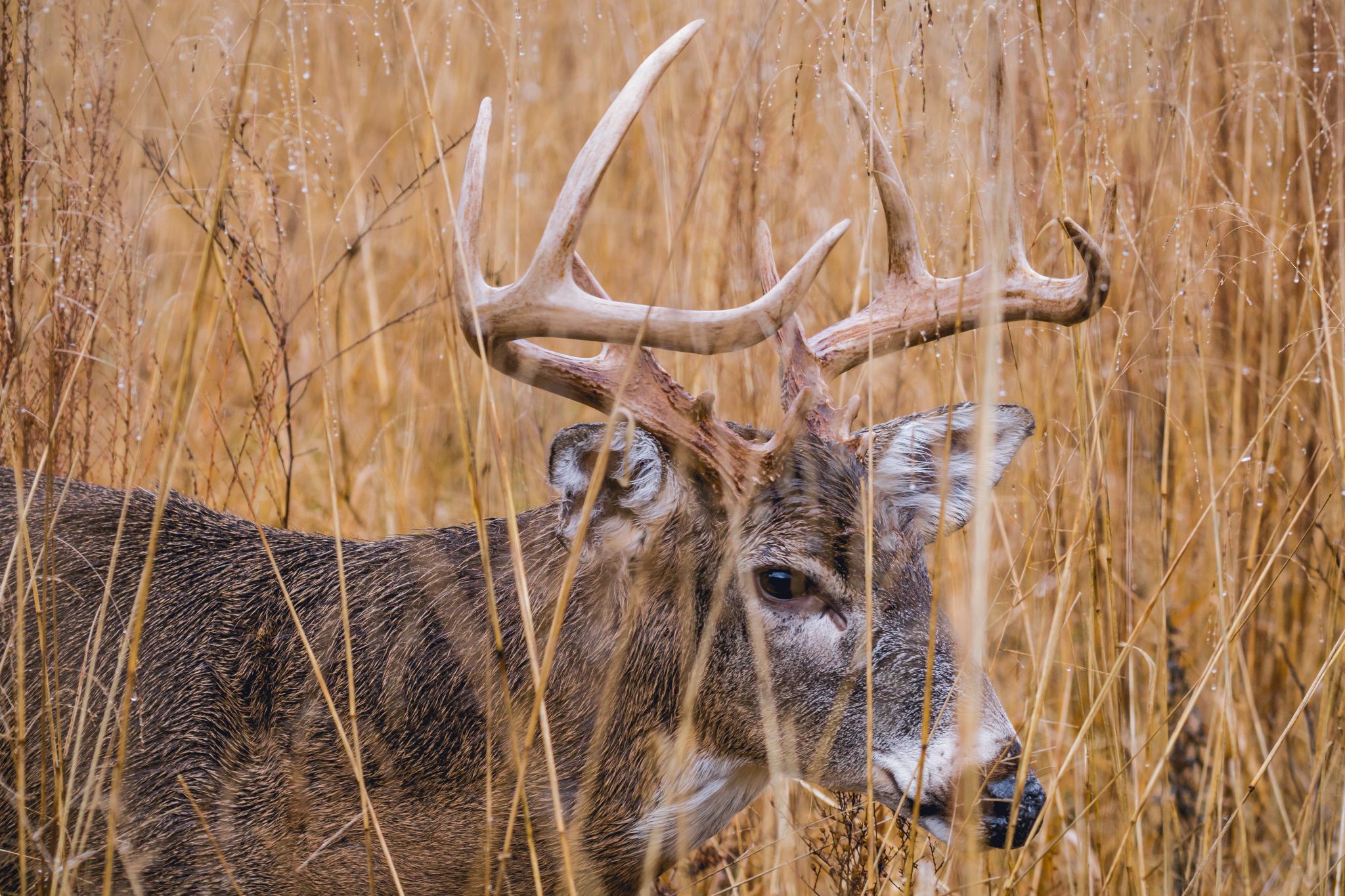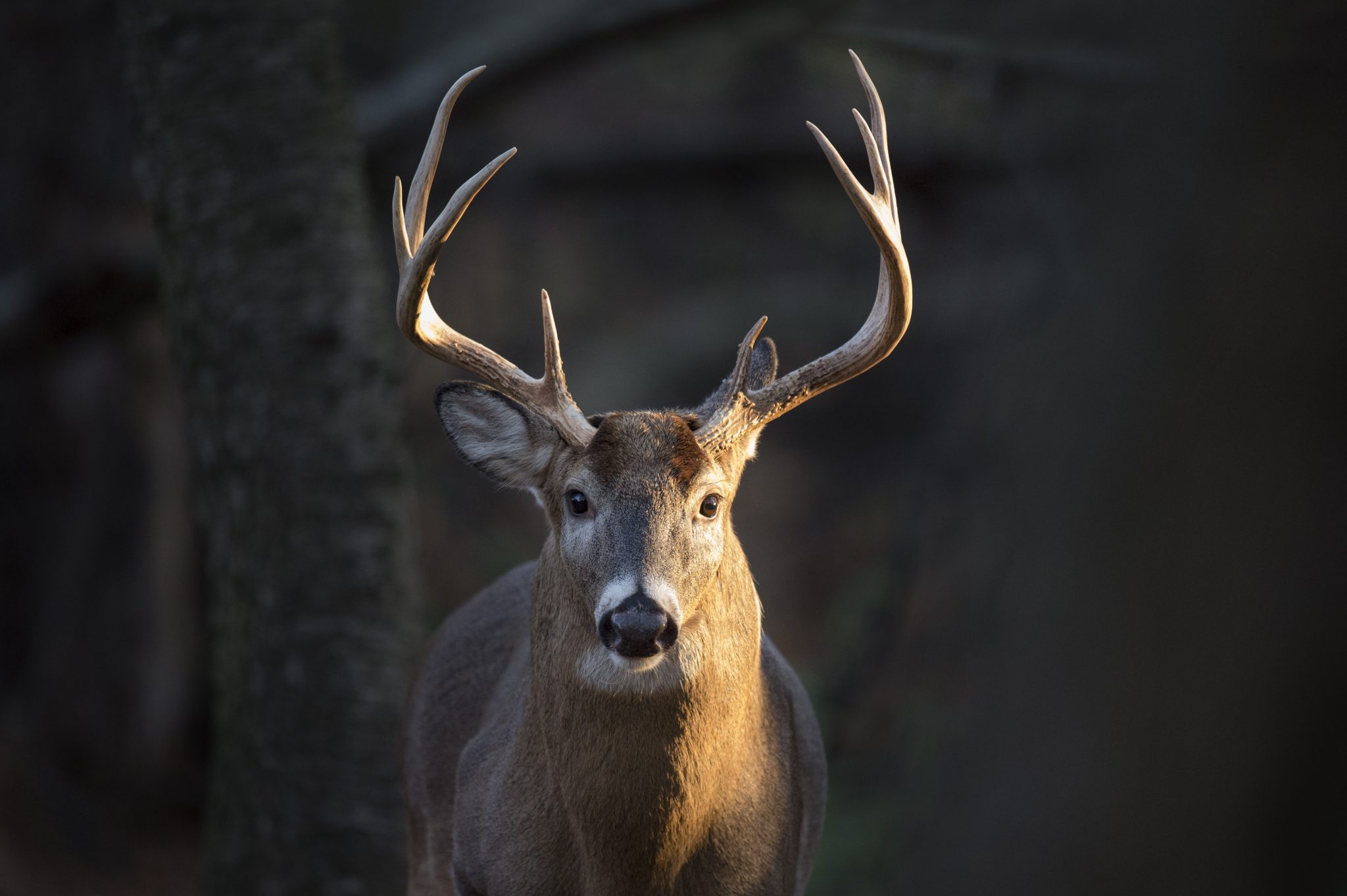Our deer-hunting culture is changing. A whole generation that has grown up with trail cameras, food plots, and hunting television shows is after much more than a giant buck this fall (though we’ll shoot one if we get the chance).
If you listen to the real experts and leaders in the whitetail world, they’re talking not just about how to kill a Booner in a plot of brassicas, they’re talking about having more fun during deer season, the importance of getting new folks into hunting, and promoting wild, free-range whitetail deer as a public resource.
We welcome these advances with open arms, but if our new whitetail-hunting culture is going to flourish, there first needs to be a reckoning. We’ve got to talk honestly about what’s working and what needs to be fixed.
Then we’ve got to turn that discussion into real action in the field. But here’s the best part: We get to accomplish this mission by doing the thing we love—hunting deer.

It’s Up to Private Landowners to Save Deer Hunting
Deer-hunter numbers have long been declining in the Midwest and Northeast. Wisconsin, for instance, has lost 9 percent of gun-deer-license buyers since 2012 (down from 633,000 in 2012 to 576,00 in 2018). In Pennsylvania, resident adult hunting licenses also decreased 9 percent since 2012.
If you see these numbers and think Great, less competition for me, you’re looking at it all wrong. Deer-license dollars support state game agencies and habitat programs. Deer hunters’ dollars help support rural economies. All that cash creates political influence. A strong deer-hunting culture means more opportunity for all.
Fortunately, there’s a revitalized hunter-recruitment movement scrambling to reverse (or at least slow) this trend. State agencies, conservation groups, and outdoor-industry companies are all launching their own efforts to recruit new adult hunters. And research shows that adults are the key—they have the means to buy gear and licenses (plus the ability to drive to a hunting spot).
Much of that recruitment energy focuses on wild game and public land. Hunting dollars support public land. Public land provides hunting opportunity. What’s not to love?
Well, here’s the hard truth. At least in the Midwest and Northeast, where the deer-hunting culture is in danger, this movement will fail without help from private landowners. Killing deer on public land in areas with high populations of hunters and minimal public access is tough for anyone. It’s even tougher for newbies who don’t know what they’re doing.
Meanwhile, the most serious deer hunters have acquired much of the best recreational land, by either buying it or leasing it from farmers (not to mention that many of those farmers take their deer hunting seriously too). Loss of access is one of the main reasons that hunters drop out, according to U.S. Fish and Wildlife surveys.
In Midwestern states such as Iowa, Kansas, and Ohio, and Eastern states such as Maine, Maryland, and Pennsylvania, at least 85 percent of land is privately owned. Landowners there are going to have to let some new hunters in if this movement is going to succeed. It’s that simple.
Now, it’s unreasonable to expect a landowner who’s spent years saving enough money to buy land (and then spent countless hours working that ground) to one day let a stranger show up to shoot his or her first deer.
What we need is an incremental change in private-land-hunting culture, according to Aaron Milliken, who is a land specialist with Whitetail Properties—a leading hunting-land real-estate company. He built his career by selling ground in western Illinois, and Milliken says he’s noticed that change happening, albeit slowly.
Killing deer on public land in areas with high populations of hunters and minimal public access is tough for anyone. It’s even tougher for newbies who don’t know what they’re doing.
“I still know some guys who won’t even let their kids on their property to hunt. But the real deer geeks, they are starting to get tired of obsessing over age and inches. They are starting to realize that deer hunting should be more about having fun,” he says. And that means inviting along buddies and family members who aren’t as experienced and don’t otherwise have access to quality property.
But before we go too far with this deer-land-for-all concept, it’s important to note that Milliken is still a serious big-deer hunter. Every fall, he gets to chase bucks that would be deer-of-a-lifetime for most hunters. At the start of his hunting career, he was fanatical about killing big bucks.
Then about eight years ago, he had a season that changed his perspective. That summer he captured trail-cam pictures of a 170-class buck in velvet, and he got to work carefully patterning the deer. He watched the buck in ag fields in the evenings, and identified its bedding and main feeding areas. He never got the right opportunity to hunt the buck during the early season, and then the buck disappeared during the rut.
“I did all my homework on this deer, and he gave me the slip. It was the buck’s elusiveness that really got to me,” Milliken says. “When he showed back up [on camera] in the late season, that’s when I kind of went crazy and got obsessed.”
Milliken hunted for 12 days in a row, sitting from dark to dark. He put off work and skipped spending time with his wife and buddies. He devoted every waking hour to killing that deer. And when he finally did, he was more relieved than happy.
“I was sick as a dog by then,” Milliken says. “I didn’t even take pictures of the buck after I shot it.”
He came out the other side of that hunt with a new realization: Deer hunting is supposed to be fun, and it’s more fun when you share it. He’s since tempered his trophy-buck obsession, and instead focuses on bringing his wife and 4-year-old son along with him.
He also invited a buddy to come out and hunt during archery season. His buddy was a younger bowhunter and didn’t have anywhere else to go except highly pressured public land.
“He learned a lot, just from helping me hang stands and run trail cameras. The perception is that if you invite people, they’re going to come and kill all your young bucks, but that’s not true.” Milliken says. “It’s more fulfilling to take someone new than it is to kill a buck on your own and have no one to share it with.” – A.R.

We Have to Stop Lying About High-Fence Hunting
Outdoor media has ruined hunting. I’ve lost count of how many hunters I’ve heard say that. They rail against the way hunting has become too commercialized, thanks to all the TV shows, websites, podcasts…and magazines too. These outlets have fooled many hunters into thinking an average day in the stand should include at least one encounter with a 150-incher. They’ve even contributed to land-leasing rates skyrocketing alongside the big-buck craze. A lot of people think those big bucks on TV and magazine covers aren’t even wild. They’re livestock in a pen. Sound like a familiar gripe?
If you’ve ever suspected that not all is as it appears to be in hunting media, you’re correct. At least on occasion. The problem is not that the viewers believe there are fakes—it’s that sometimes the hunting business knows there are fakes but turns a blind eye. Our industry is eager to rally around certain causes—conservation, Second Amendment rights—but it’s not always as eager to review its own impact.
But some things need to be reviewed, and here’s an example. My friend Kerry Wix has been a freelance cameraman for 16 years. He’s filmed everything from catfish noodling to grizzly hunting for the Outdoor, Sportsman, and Pursuit channels. “If you watch much outdoor TV,” he says, “you’ve seen something I’ve filmed.” Overall, he loves it. And he insists that most of the shows out there are the real deal. “The big-name shows, for the most part, are 100 percent legit,” he says. “The people hosting them are good hunters. They set their own stands and do their own thing, the right way. And they put up with a lot of haters accusing them of hunting behind fences along the way.”
But last fall, Wix took a gig filming a Wisconsin deer hunt for a show that he asked us not to name. It appears on the Sportsman Channel, and he’d not filmed for the show previously. “They mentioned that we’d be on a ‘preserve,’ ” Wix says. “I had my suspicions that it was fenced, but I didn’t know for sure until we drove through this huge gate on the way to the lodge.” High fences aren’t Wix’s thing, but the fence itself wasn’t the real issue. “My problem is they did everything possible to play it off as a wild hunt.”
Not long into the hunt, one of the hosts let a giant, double-drop-tine non-typical—a world-record-class deer in the wild—walk by in hopes of getting something more “believable” on video. They asked Wix to avoid filming the fence in the background. He refrained from filming the elk that bedded near the stand too. “I was looking at a 400-inch bull, right there in Wisconsin,” he says with a laugh. But no one was laughing when one host wounded a buck with a crossbow.
Our industry is eager to rally around certain causes—conservation, Second Amendment rights—but it’s not always as eager to review its own impact.
With the help of the preserve owner, the hunter followed up on the buck the next morning. The deer was still alive, and the hunter finished it with a rifle. “I was in the stand filming [the other host], and heard the shot,” Wix says. He was then asked to film a “recovery” staged in another area. “They moved the buck, and kicked snow over the blood where they’d dragged it.” The host gave an interview and acknowledged shooting the buck again—but while holding his sponsor’s crossbow, never mentioning the rifle.
Wix finished the job, but with mixed emotions. “I didn’t ask for that, and I was kind of stuck,” he says. “I could’ve spoken up, but it just would’ve caused an argument. The deer was already dead.”
He had another shoot booked with the show that he subsequently canceled. But the episode is scheduled to air this fall. Game laws don’t apply inside a high fence, so there are no legal ramifications for using the rifle. Nor for passing off a buck with a bullet hole as a crossbow kill. To be fair, the hosts mention the outfitter, Wix says, and if you research the place, you can deduce it’s high-fence. But it’s not transparent.
You could argue such shows are for entertainment. The Bachelor and WWE matches are presented as real too, but everyone knows better. The difference is, nothing in those shows gets killed for entertainment, and our hunting culture doesn’t suffer from a fake folding chair to the face.
“Shit like that is exactly what people hate about outdoor TV, and I hate that it takes away from the good guys in the business,” Wix says. “But more than that, I’m a hunter. I have emotions when I shoot a deer; it’s a resource that should be respected. Yeah, it was in a pen, but it was killed for the sake of footage and photos.”
Situations like this aren’t the norm with outdoor TV shows—or magazine stories—but they’re not unheard of either. They reinforce the worst stereotypes about hunting media, but so often, the show goes on anyway. Viewers and readers see it and, because they’re not stupid, rightfully come to believe this type of content is bad for hunting. Outdoor media plays a role in hunting beyond entertainment. And today’s hunters are demanding an authentic message about hunting wild deer. The industry should listen. —W.B.
Hunters Can Be Happy in the CWD Age
A few years ago, the Tennessee bag limit was reduced from as many as 11 bucks per year to two. Hunters quickly began noticing a difference. There were bigger deer running around, and for a couple of years, the state even had the world-record non-typical—the Stephen Tucker buck.
But then, last December, chronic wasting disease was discovered in a few southwestern counties. Tennessee’s CWD response plan was put into action immediately, starting with increased testing and restrictions on how harvested deer should be handled.
More aggressive measures will be enacted ths fall, but those steps should be more palatable to hunters than the eradication efforts frequently seen in CWD response plans. That’s by design. The most recent research has shown that nearly 80 percent of CWD-positive animals are 2 years old or older. Contrary to popular belief, the disease has about the same prevalence rate between mature bucks and mature does. But bucks are more nomadic, especially during the rut—and nomadic deer are likelier to spread the disease.
So, a new CWD zone was created in eight southwestern counties, with new hunting opportunities such as an August season during which hunters can use muzzleloaders (open on many public lands), and “earn a buck” opportunities, where hunters get extra buck tags by killing two does and submitting them for sampling. Also, hunters who kill a CWD-positive buck will be given a second buck tag.
That is extra pressure on bucks in the area, and it runs counter to the management momentum Tennessee hunters have been enjoying. But it’s designed to manage for a potentially catastrophic disease, and to do it in a way that’s not so unpopular that it discourages people from hunting altogether.
So, a state agency is fighting CWD while recognizing it needs to keep hunters happy too? If there’s a better example of modern deer- hunting culture at work, I haven’t seen it. —W.B.

Deer Management and Hunting Tradition Can Coexist
People love to point fingers at everything that’s “wrong” with modern deer-hunting culture: food plots, trail cameras, leases, antler restrictions, bucks with names, and Quality Deer Management, to name a few. There was none of that mess back in Granddaddy’s day, and the world was better because of it.
That’s actually nonsense. QDM works (the real QDM, which focuses on herd health and habitat, not just growing trophy bucks), and you need only look at the Southeast for proof. This region of the country was once known for deer dogging and crazy-high buck limits. These days, it’s not only the most active QDM region in the country, but it’s also the nation’s top region for deer hunting by almost every measure. Seven of the Quality Deer Management Association’s top 10 membership states are in the Southeast. (It probably helps that the QDMA was founded in South Carolina and is based in Georgia.)
So, starting with the numbers: Southern hunters like to shoot, so much so that they have killed more antlered deer, on average, than hunters in any other region over the past five years. Even if you took Texas out of that tally (where more hunters kill more deer than in any other state), the Southeast would still finish close behind the Midwest in average annual antlered deer take. The Southeast also has the highest deer harvest—bucks and does—per 100 hunters of any region in the country.
And yet they’re not just shooting any deer that walks: All of the top five states with the highest percentage of 3½-year-old (or older) bucks in the harvest are Southern states. Mississippi is leading the way, with 77 percent of its buck take recorded at 3½ years or older. And all the while, as hunting-license sales have declined nationwide, they’ve mostly held steady in the South—and in some states have even increased since 2011. With longer seasons, deer hunters in the Southeast are the most avid in the country too, logging more days afield per person than hunters in any other region.
So, adopting QDM principles, and the food plots and trail cams that have come with it, has resulted in more deer, bigger deer, and a robust hunting culture? Northerners might want to pay attention to what’s going on down there. —W.B.
This article first ran on Sept. 30, 2019, on outdoorlife.com.








Comments